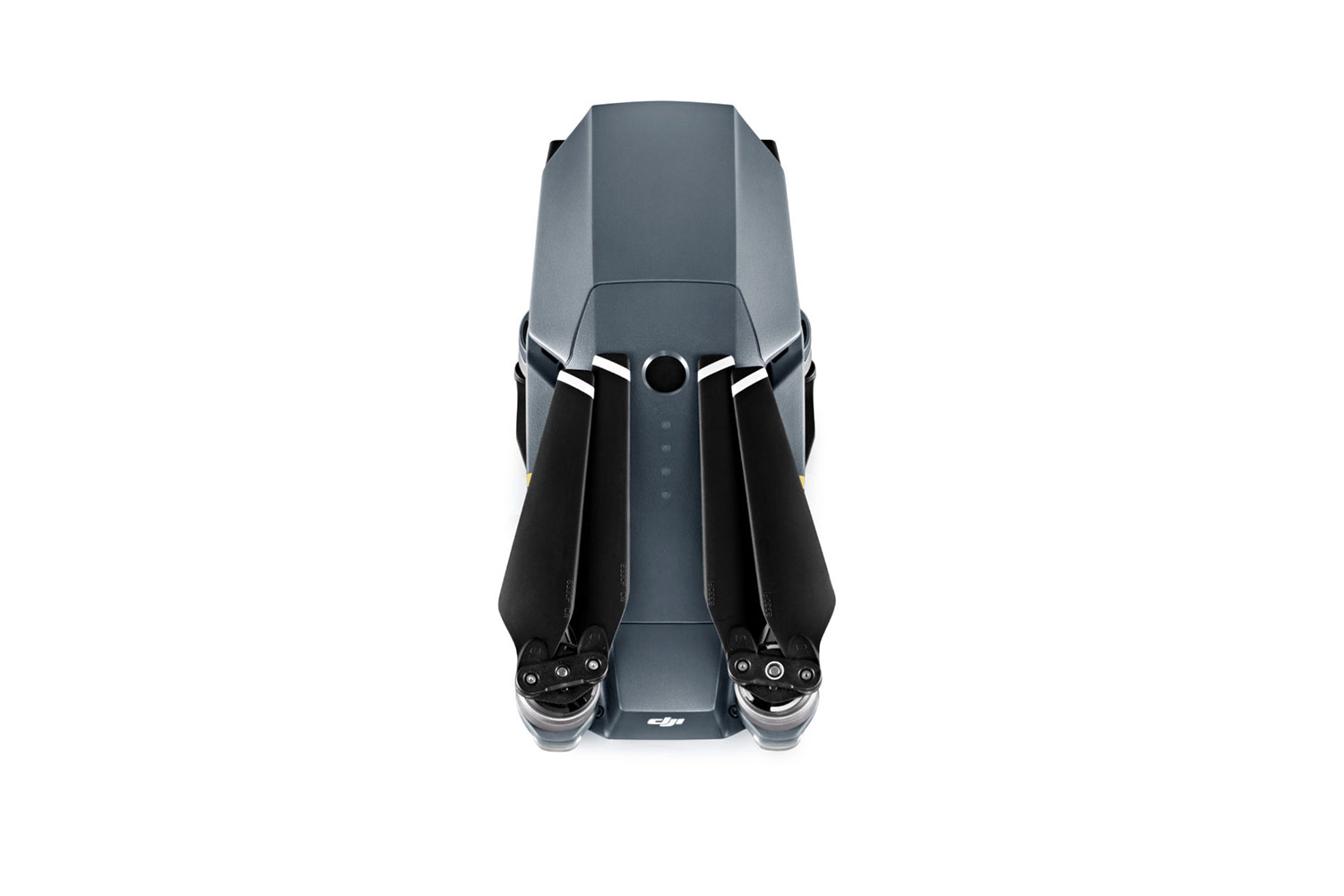GoPro may have beaten DJI to the punch with a compact folding drone but DJI’s been in the drone game for a decade — and the new Mavic Pro may just crash the Karma’s party. Today, DJI unveiled the Mavic Pro, the company’s first folding drone which slims down to roughly the size of a water bottle, along with new DJI Goggles for a bird’s-eye view of the flight.
While the DJI Mavic Pro is smaller than the quadcopter giant’s other options, it still packs quite a few of the advanced features DJI’s known for. Obstacle avoidance and auto tracking — both noticeably absent from the GoPro Karma — are not only included but varied with several different tracking modes and an indoor crash prevention setting called tripod mode. Users don’t even need to put a tracking device on whatever they want to follow since selecting the subject on a smartphone does the trick.
Mavic appears to be the company’s smartest yet with an updated FlightAutonomy system.
DJI says the 1.64-pound drone folds down to slightly larger than a standard sized water bottle. The company continues the portability theme by including a folding controller which allows a smartphone to slide into it, giving users both touchscreen and joystick options.
While DJI is known for its advanced flight options, the Mavic appears to be the company’s smartest yet with an updated FlightAutonomy system. DJI says the new system is a complex network for making navigation simpler — and this looks to be the case with five built-in navigational cameras, GPS, ultrasonic range finders, multiple sensors, and 24 computing cores. In essence, the drone boasts several advanced flight modes and the company says it’s capable of avoiding most obstacles at speeds of up to 22 mph, though the drone is capable of hitting 40 mph in sport mode.
Along with DJI’s autofollow, crash avoidance, and flight modes introduced in earlier quadcopters, the Mavic includes a new precision landing feature which allows the drone to return to within one inch of the original take off spot with a simple return home command. Racing uphill? A new mode keeps the Mavic at the same distance from the incline as it flies.
The Mavic even includes a few new selfie features, as well. With gesture control, users simply wave the drone over before forming a square with their hands to tell the drone to shoot a photo.
Equipped with both a built-in 4K capable camera and a three-axis gimbal — DJI’s smallest stabilizer to date — the Mavic comes standard with top-of-the-line equipment. The 12 megapixel camera shoots in both RAW and JPEG, while users have the option to make use of 4K in 30 fps, or 1080p at 96 fps. DJI says the camera’s gimbal is even steady enough to shoot aerial long exposures up to two seconds long.
Along with the Mavic, DJI introduced its own immersive goggles for seeing what the drone camera sees mid-flight. The glasses display an 85 degree view in 1080p HD and instead of sending a signal from the drone to the controller and then to the glasses, the DJI Goggles receive the signal straight from the drone which helps prevent lag time in the footage.
So is the DJI’s first folding drone enough to make GoPro fold early on in their drone game? While DJI says the Mavic is designed to be simple to fly, it has quite a few more features than the Karma — a drone designed for UAV newbies. In other words, it’s tough to say without actually flying both drones if the level of simplicity is the same. The Karma does also use a removable gimbal which makes the drone a more flexible accessory, particularly for current GoPro owners.
Still, the lack of obstacle avoidance and autofollow features is likely enough to make the Mavic a simple choice over the Karma for some. Priced at $999, DJI’s Mavic touts a higher price tag than the Karma but that difference is negotiated for users who don’t already own a GoPro camera, since it’s not included.
DJI also appears to be gathering some inspiration from GoPro’s care plan the action camera giant added earlier this year. The company also introduced a new $99 optional DJI Care Refresh option which covers accidental damage for a year. The DJI Mavic is expected to ship October 15.
Editors' Recommendations
- GoPro Hero 10 Black vs DJI Action 2 vs. Insta360 One RS: Clash of the action cameras
- DJi’s Mavic Air 2 packs 4K 60FPS video and obstacle avoidance for $800
- GoPro Hero8 Black vs. DJI Osmo Action: Comparing two of the best action cams














